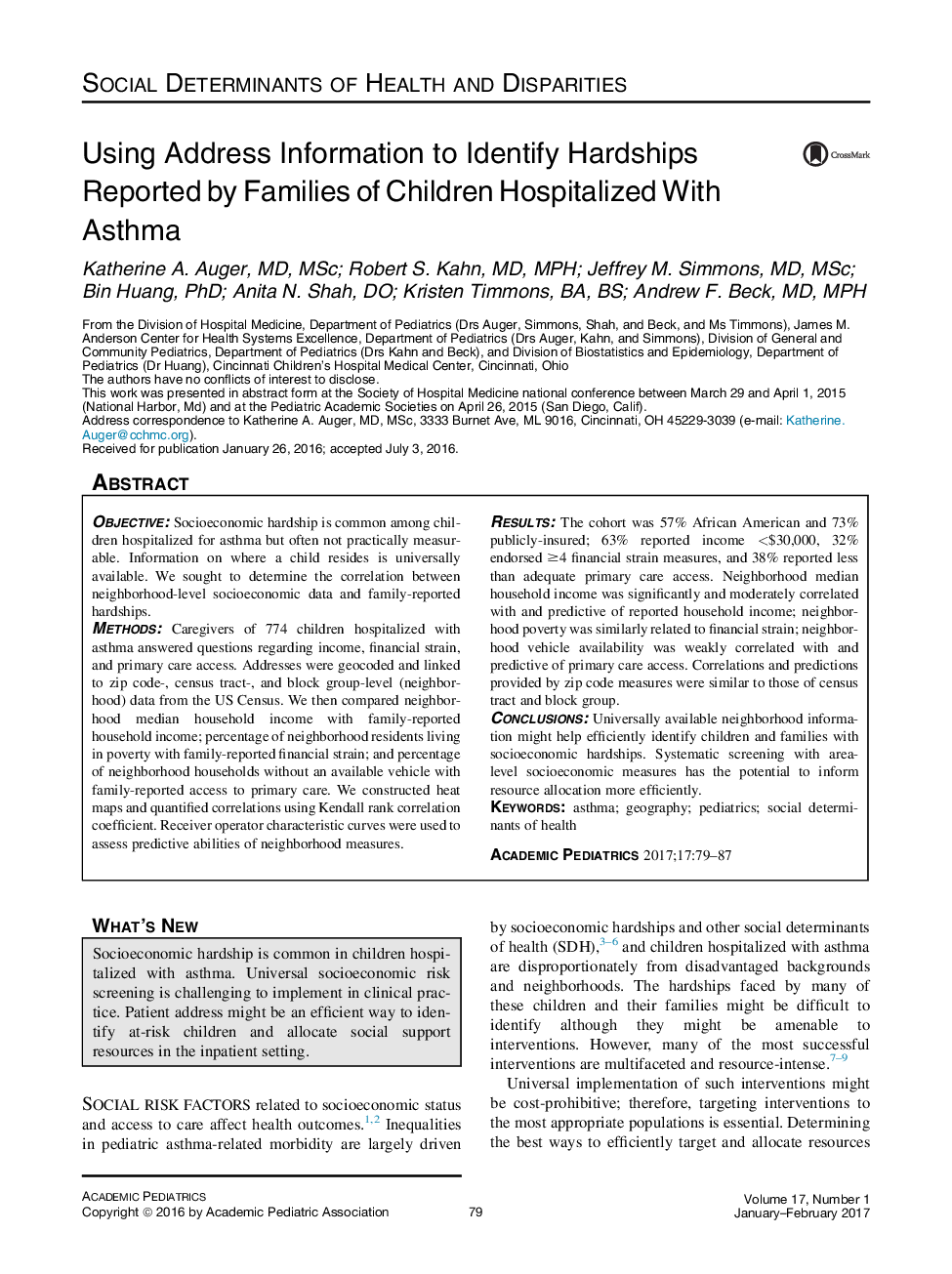| کد مقاله | کد نشریه | سال انتشار | مقاله انگلیسی | نسخه تمام متن |
|---|---|---|---|---|
| 5717024 | 1411176 | 2017 | 9 صفحه PDF | دانلود رایگان |
ObjectiveSocioeconomic hardship is common among children hospitalized for asthma but often not practically measurable. Information on where a child resides is universally available. We sought to determine the correlation between neighborhood-level socioeconomic data and family-reported hardships.MethodsCaregivers of 774 children hospitalized with asthma answered questions regarding income, financial strain, and primary care access. Addresses were geocoded and linked to zip code-, census tract-, and block group-level (neighborhood) data from the US Census. We then compared neighborhood median household income with family-reported household income; percentage of neighborhood residents living in poverty with family-reported financial strain; and percentage of neighborhood households without an available vehicle with family-reported access to primary care. We constructed heat maps and quantified correlations using Kendall rank correlation coefficient. Receiver operator characteristic curves were used to assess predictive abilities of neighborhood measures.ResultsThe cohort was 57% African American and 73% publicly-insured; 63% reported income <$30,000, 32% endorsed â¥4 financial strain measures, and 38% reported less than adequate primary care access. Neighborhood median household income was significantly and moderately correlated with and predictive of reported household income; neighborhood poverty was similarly related to financial strain; neighborhood vehicle availability was weakly correlated with and predictive of primary care access. Correlations and predictions provided by zip code measures were similar to those of census tract and block group.ConclusionsUniversally available neighborhood information might help efficiently identify children and families with socioeconomic hardships. Systematic screening with area-level socioeconomic measures has the potential to inform resource allocation more efficiently.
Journal: Academic Pediatrics - Volume 17, Issue 1, JanuaryâFebruary 2017, Pages 79-87
